As the culinary landscape evolves, so too does the technology that shapes our kitchens. Air fryers, once a niche appliance, have now become a staple in modern kitchens across the globe. This shift has been particularly pronounced in Western markets, where consumer preferences and technological advancements have spurred a demand for healthier cooking solutions. In this article, we delve into the transformative journey of air fryers, exploring the key trends that are propelling their popularity and the future outlook that promises innovation and growth.
The Evolution of Kitchen Appliances: A Focus on Air Fryers
From the ancient days of open fires and primitive cookware, kitchen appliances have undergone a remarkable transformation. Over centuries, these tools have become more sophisticated, streamlined, and integral to our daily lives. Among these innovations, air fryers have emerged as a game-changer, blending the health benefits of cooking with little to no oil with the convenience of modern appliances. Let’s delve into the fascinating journey of air fryers and their evolution within the kitchen appliance landscape.
Early Beginnings: The Concept Takes ShapeThe roots of the air fryer concept can be traced back to the 1950s when the first commercial deep fryer was introduced. These early devices were large and primarily used in commercial kitchens. However, the idea of using hot air to cook food with minimal oil was born. It wasn’t until the 1990s that a Belgian engineer, Christian Van Acker, brought this concept to the consumer market with the introduction of the Actifry.
The Rise of Health-Conscious CookingAs the health and wellness movement gained momentum in the late 20th century, consumers began seeking alternatives to traditional frying methods that involved large amounts of oil. The air fryer, with its promise of crispy, golden-brown results with up to 80% less fat, quickly caught on. This shift was not only driven by the desire for healthier cooking but also by the convenience and efficiency of the appliance.
Technological Advancements and Design InnovationsAs technology progressed, so did the design and functionality of air fryers. Early models were bulky and limited in their cooking capabilities. However, with advancements in heating elements and fan technology, modern air fryers are compact, versatile, and capable of cooking a wide range of foods. These improvements include programmable settings, adjustable temperature controls, and even the ability to roast, bake, and grill.
The Consumer Experience: Feedback and IterationsThe success of air fryers has been largely influenced by consumer feedback and the continuous iteration of the product. Early adopters provided valuable insights that led to enhancements in features and performance. From non-stick cooking bowls to digital displays, the air fryer has evolved to meet the needs and preferences of a diverse consumer base.
Market Penetration: A Global PhenomenonThe air fryer market has expanded rapidly across the globe. In Europe and the United States, particularly, there has been a significant surge in popularity. This can be attributed to several factors, including the emphasis on healthy eating, the influence of celebrity chefs who have endorsed the appliance, and the increasing number of busy households seeking quick and nutritious meal options.
Cultural Variations: Air Fryers Around the WorldWhile the basic concept of the air fryer remains consistent globally, cultural preferences have led to variations in design and usage. In some regions, air fryers are used to cook traditional dishes, while in others, they have become a staple for modern, low-fat cooking techniques. These cultural adaptations highlight the versatility and adaptability of the air fryer as an appliance.
Environmental Considerations: A Greener ApproachThe environmental impact of cooking methods has become a significant concern. Air fryers, with their reduced oil usage and energy efficiency, offer a greener alternative to traditional frying. As awareness of sustainability grows, the environmental benefits of air fryers are becoming a compelling reason for consumers to make the switch.
The Future of Air Fryers: Emerging TrendsLooking ahead, the future of air fryers seems bright. With the rise of smart home technology, we can expect to see air fryers that integrate with smartphones and offer personalized cooking recommendations. Additionally, manufacturers are exploring new materials and cooking techniques to further enhance the performance and versatility of air fryers.
In conclusion, the evolution of air fryers is a testament to the ongoing quest for healthier, more convenient, and sustainable cooking solutions. As technology continues to advance, the air fryer is poised to become an even more integral part of the modern kitchen, catering to the diverse needs and preferences of consumers worldwide.
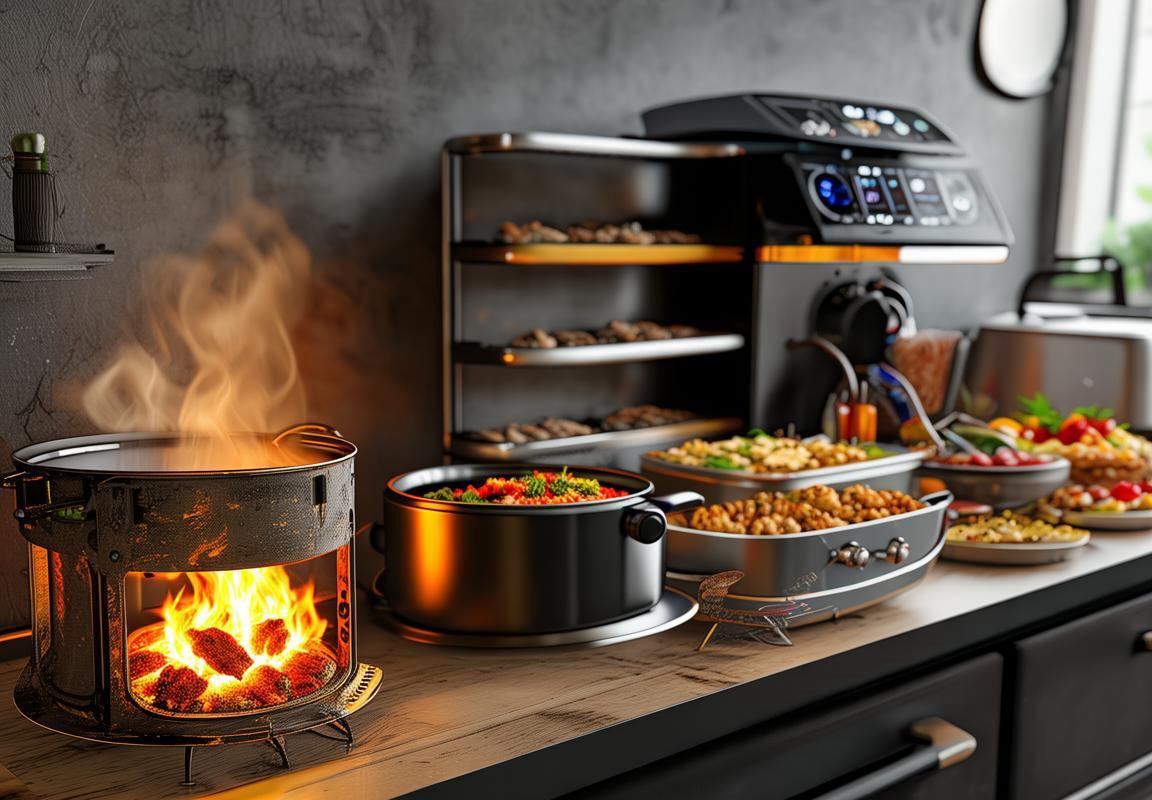
The Global Market Landscape: A Snapshot
The global kitchen appliance market is a sprawling tapestry of innovation and consumer demand, with each region offering unique trends and opportunities. As we take a closer look at this vibrant landscape, it’s clear that certain products, like air fryers, have gained significant traction worldwide.
-
A Diverse Range of MarketsThe global market for kitchen appliances encompasses a wide array of countries, each with its own cultural preferences and purchasing habits. From the bustling cities of Asia to the sprawling suburbs of North America and the cozy homes of Europe, the demand for kitchen gadgets varies greatly.
-
Rapid Urbanization and Changing LifestylesUrbanization has been a major driver in the growth of the kitchen appliance market. As people move to urban areas, they seek convenience and efficiency in their daily lives, leading to a surge in the sale of compact and easy-to-use appliances. This shift has also been accompanied by a growing interest in health and wellness, which has propelled the popularity of appliances like air fryers that offer healthier alternatives to deep-frying.
-
The Emergence of Smart AppliancesThe integration of technology into kitchen appliances has been a game-changer. Smart kitchen gadgets equipped with IoT (Internet of Things) capabilities are becoming increasingly common. These devices offer users the ability to control and monitor their appliances remotely, enhancing convenience and efficiency.
-
The Influence of Online RetailE-commerce has revolutionized the way consumers purchase kitchen appliances. Online retailers have expanded their offerings, making it easier for customers to compare prices, read reviews, and make informed purchasing decisions. This has also led to the rise of subscription services that deliver kitchen appliances directly to consumers’ doors.
-
Key Players and Market ShareThe global kitchen appliance market is dominated by a few key players who have established strong brands and distribution networks. Companies like Electrolux, Whirlpool, and BSH Hausgeräte hold significant market share, but there is also room for new entrants who can offer innovative products and competitive pricing.
-
The Rise of Local BrandsIn many regions, local brands have found success by catering to specific market needs. These brands often offer unique designs and functionalities that resonate with local consumers, allowing them to carve out a niche in the global market.
-
The Importance of SustainabilityAs environmental concerns grow, sustainability has become a crucial factor in the kitchen appliance market. Consumers are increasingly looking for appliances that are energy-efficient, made with sustainable materials, and have a low carbon footprint.
-
Cross-Regional CollaborationsThe global nature of the kitchen appliance market has led to increased collaboration between companies from different regions. These partnerships can result in the sharing of technology, design, and manufacturing expertise, leading to more advanced and competitive products.
-
The Role of Marketing and PromotionEffective marketing and promotion are essential for success in the kitchen appliance market. Brands need to understand their target audiences and communicate the benefits of their products in a compelling way. Social media, influencer partnerships, and traditional advertising channels all play a role in shaping consumer perceptions.
-
Future Trends and PredictionsLooking ahead, the kitchen appliance market is expected to see continued growth, driven by technological advancements, changing consumer habits, and an ongoing focus on health and sustainability. Smart appliances, eco-friendly designs, and innovative cooking technologies are likely to be key trends in the coming years.
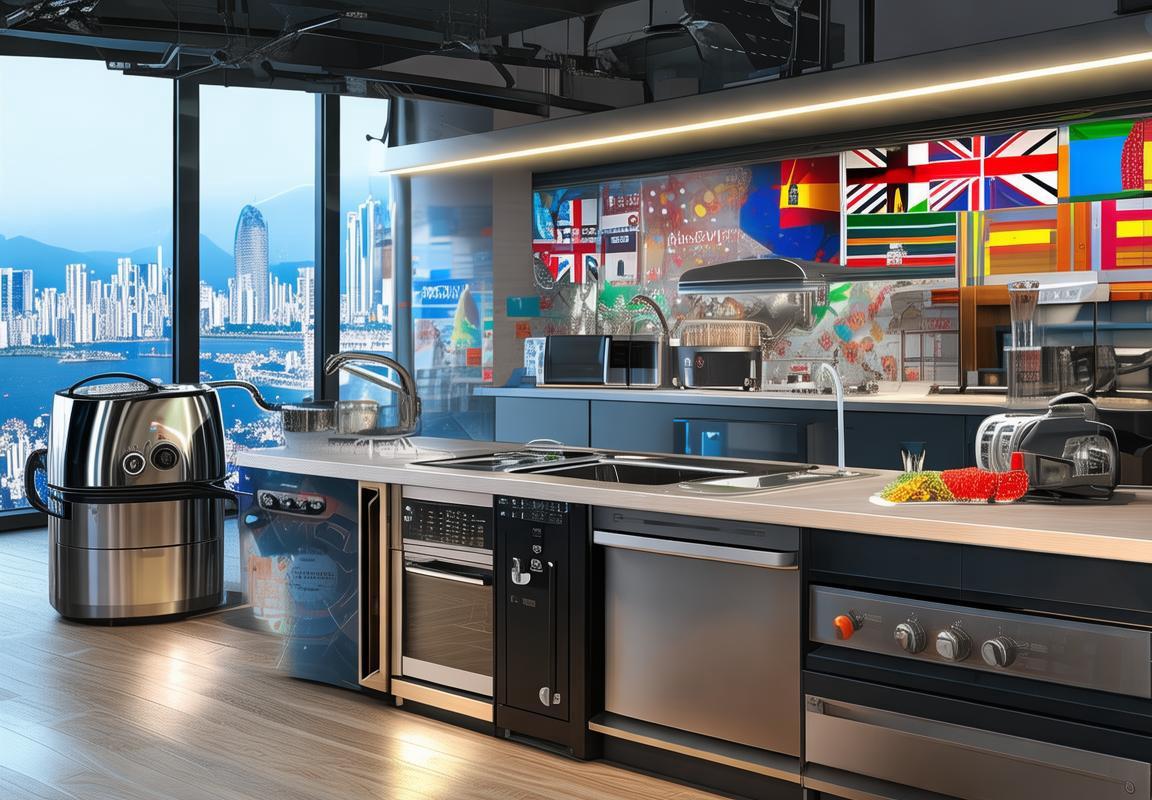
The European and American Markets: A Comparative Analysis
The European market for kitchen appliances, particularly air fryers, exhibits a distinct set of characteristics that set it apart from its American counterpart. While both regions share a growing interest in health and wellness, their approaches to kitchen technology and consumer preferences differ significantly.
In Europe, there’s a strong emphasis on energy efficiency and sustainability. Air fryers that are Energy Star-rated or boast low power consumption tend to resonate well with consumers. The European Union’s stringent regulations on energy usage have influenced the design and functionality of these appliances, with manufacturers focusing on innovative solutions that minimize energy waste. This focus on eco-friendliness has also led to a preference for air fryers that use less oil, aligning with the region’s health-conscious consumer base.
Conversely, the American market is more diverse when it comes to consumer preferences. While health remains a key factor, there’s also a significant segment of consumers who prioritize convenience and technology. American air fryers often come with a variety of pre-programmed settings and smart features that cater to busy lifestyles. The market is also influenced by the popularity of gourmet cooking, with air fryers that can replicate the taste and texture of fried foods without the guilt.
In terms of design, European air fryers tend to be sleek and modern, with a focus on minimalism and aesthetics. They are often integrated into kitchen countertops or placed on them as standalone units. American air fryers, on the other hand, range from compact countertop models to larger, more industrial-looking units that can fit into a variety of kitchen settings.
When it comes to marketing strategies, European brands often emphasize the health benefits and environmental impact of their products. They highlight the reduction in oil usage and the lower carbon footprint of air fryers compared to traditional deep fryers. American brands, while also emphasizing health, may lean more towards showcasing the versatility and convenience of their appliances, appealing to the busy consumer who wants to enjoy a variety of foods with minimal effort.
The European market also sees a higher prevalence of organic and natural ingredients, which has influenced the types of recipes and cooking methods that air fryers are designed to accommodate. This means that European air fryers often come with features that allow for the cooking of vegetables, meats, and even desserts with organic ingredients, catering to the demand for clean eating.
In the American market, there’s a greater emphasis on the ability to cook a wide range of foods, from traditional fried snacks to international dishes. This has led to a proliferation of air fryer models that can handle a variety of cooking temperatures and times, making them suitable for a broader array of recipes.
Another notable difference lies in the after-sales service and warranty policies. European manufacturers often provide comprehensive support, including extended warranties and customer service hotlines. In the U.S., while service is still important, there’s a trend towards self-service and online troubleshooting, reflecting the tech-savvy nature of American consumers.
The price points also vary between the two markets. In Europe, consumers are generally willing to pay a premium for high-quality, energy-efficient air fryers. In the U.S., there’s a wider price range, with both premium and budget-friendly options available, reflecting the diverse economic landscape.
In conclusion, the European and American markets for air fryers differ in their approach to energy efficiency, design, marketing, and consumer preferences. Understanding these differences is crucial for manufacturers looking to enter or expand their presence in these dynamic regions. By tailoring their products and strategies to the unique characteristics of each market, companies can better meet the needs and expectations of their target consumers.
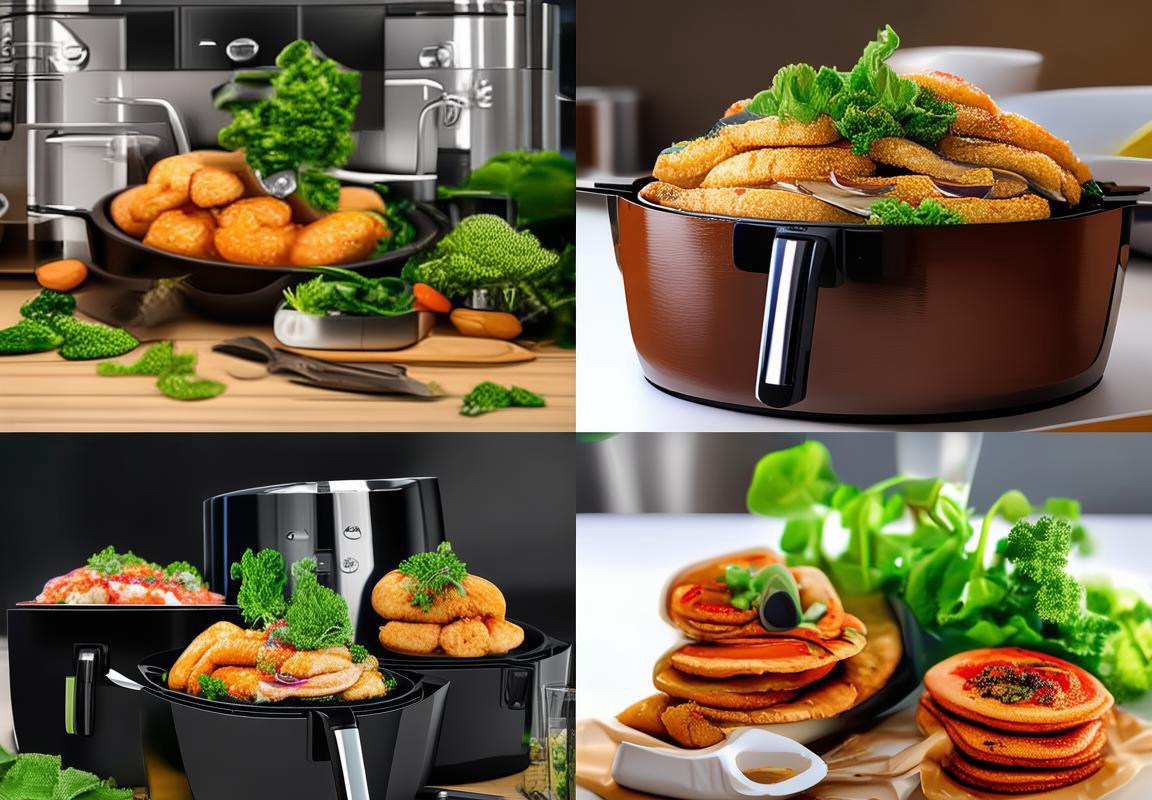
The Role of Export Experience in Air Fryer Manufacturing
In the dynamic world of air fryer manufacturing, the export experience of a company plays a pivotal role in shaping its success. This segment of the market, while seemingly straightforward, harbors complexities that require a nuanced understanding of international trade dynamics.
The export journey of an air fryer manufacturer is marked by a series of strategic decisions and market adaptations. For starters, understanding the cultural nuances of target markets is crucial. Different regions have varying preferences and expectations, which can range from design aesthetics to functional capabilities. For instance, in Europe, there’s a strong preference for eco-friendly and energy-efficient appliances, whereas in the United States, the emphasis might be more on health and convenience.
Moreover, the export experience involves navigating through regulatory frameworks. Each country has its own set of standards and certifications that must be adhered to, ensuring that the air fryers meet the necessary safety and quality benchmarks. This process requires not only a deep knowledge of international regulations but also the ability to adapt manufacturing processes to comply with these diverse requirements.
Another key aspect of export experience is the logistics. The ability to manage supply chains efficiently, especially in the face of global supply chain disruptions, is essential. This includes everything from sourcing raw materials to coordinating shipping and customs clearance. A manufacturer with extensive export experience is better equipped to handle these complexities, ensuring that products reach the market in a timely and cost-effective manner.
In the realm of marketing and branding, the export experience is invaluable. Establishing a strong brand presence in foreign markets requires a localized approach, which involves tailoring marketing strategies to resonate with local consumers. This can mean translating product literature, understanding local advertising trends, and leveraging social media platforms that are popular in each region. Companies with a proven track record in exporting air fryers have likely honed these skills over time, giving them a competitive edge.
Customer service and after-sales support are also critical in the export market. A company with years of experience knows the importance of building trust with customers through reliable customer service. This includes handling warranty claims, providing technical assistance, and ensuring that the product meets the user’s expectations. The ability to offer this level of support across different languages and time zones is a testament to a manufacturer’s maturity in the export space.
The export experience also shapes the product development cycle. By continuously engaging with international customers, a manufacturer gains insights into emerging trends and market needs. This feedback loop is crucial for staying ahead of the competition and for innovating new products that cater to global demand. The experience of exporting air fryers allows companies to anticipate market shifts and adapt their offerings accordingly.
Financial management is another area where export experience is paramount. Currency fluctuations, import duties, and taxes can significantly impact the bottom line. Companies with a history of exporting are better at managing these financial risks, often through hedging strategies and maintaining a diversified customer base that mitigates the impact of any single market’s economic downturn.
Lastly, the export experience fosters a culture of continuous improvement. By facing the challenges of international trade, manufacturers develop a resilience and agility that can be applied to all aspects of their business. This includes improving manufacturing processes, enhancing product quality, and staying abreast of technological advancements.
In conclusion, the role of export experience in air fryer manufacturing is multifaceted. It influences everything from product design and regulatory compliance to marketing strategies and customer support. A company with a robust export history is well-prepared to navigate the complexities of the global market and to leverage its experience to drive sustainable growth.
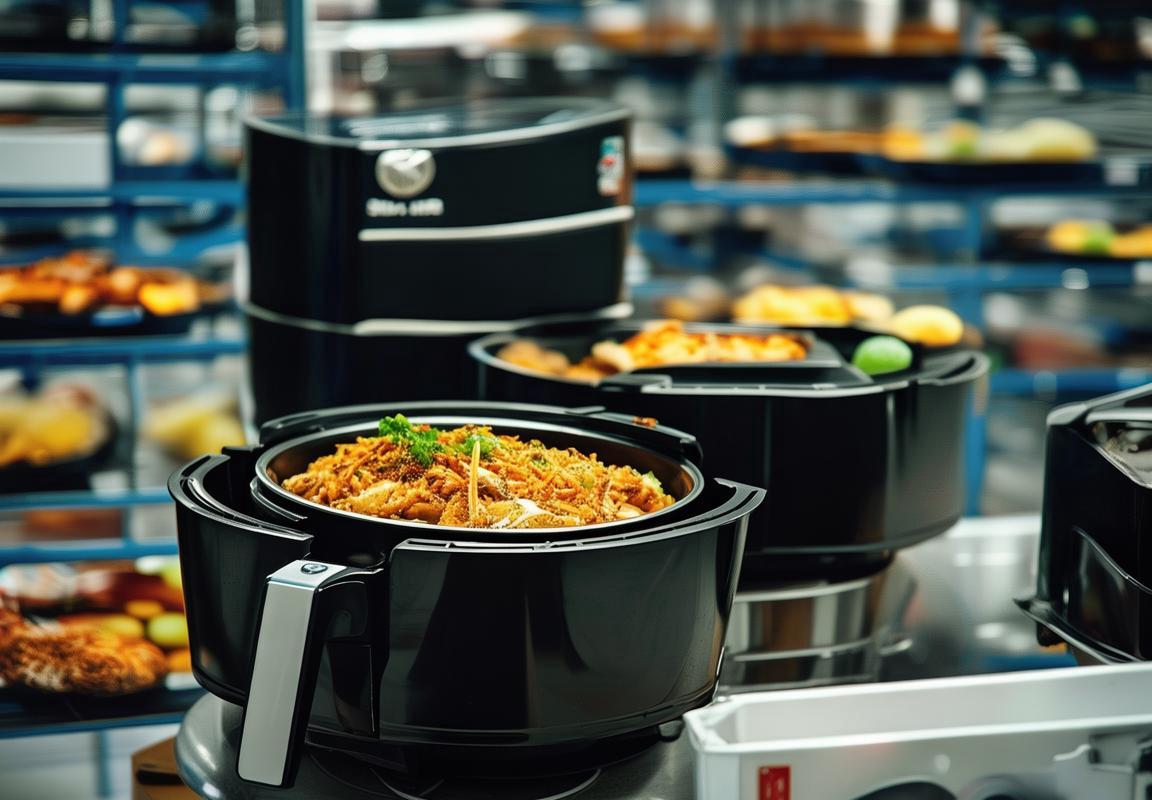
10+ Years of Export Success: A Case Study
In the competitive landscape of air fryer manufacturing, a company with over a decade of export experience has carved out a niche for itself. This case study delves into the strategies and learnings that have contributed to their sustained success in the global market.
Navigating the intricacies of international trade, this manufacturer has honed its operations to cater to diverse markets, each with its unique preferences and regulatory requirements. One of the key strengths lies in their ability to adapt quickly to market trends, ensuring that their products remain relevant and in demand.
Their product range, which includes a variety of air fryer models, has been meticulously designed to appeal to different consumer segments. From entry-level models to premium, high-end appliances, the company’s offerings cater to a broad spectrum of budgets and cooking needs. This diversity has allowed them to capture a significant share of the market, both within their core export regions and in new territories.
Supply chain management has been a cornerstone of their success. With over a decade of experience, they’ve developed robust relationships with suppliers, ensuring a steady flow of high-quality components. This has not only helped in maintaining product consistency but has also allowed them to respond swiftly to market demands, reducing lead times and increasing customer satisfaction.
Quality control is non-negotiable in their manufacturing process. Each air fryer undergoes rigorous testing to meet international safety standards, and the company invests heavily in state-of-the-art testing facilities. This commitment to quality has earned them certifications that are highly regarded in the global market, giving them a competitive edge.
Understanding the importance of branding, the company has established a strong presence in key export markets. Their branding strategy focuses on highlighting the health benefits of air frying, positioning their products as a healthier alternative to traditional deep-frying methods. This approach has resonated well with consumers, especially in health-conscious markets like Europe and North America.
Marketing and distribution channels have been carefully selected to ensure maximum reach. They’ve leveraged e-commerce platforms to tap into the growing online market, offering direct-to-consumer sales in several countries. Simultaneously, they’ve maintained a strong presence in physical retail stores, ensuring that their products are accessible to a wide audience.
Customer feedback has been a vital tool in their continuous improvement process. By actively seeking and analyzing customer reviews, they’ve been able to identify areas for product enhancement and service improvement. This customer-centric approach has helped them build a loyal customer base and has been instrumental in their repeat business rates.
Their export strategy is not just about selling products; it’s about building long-term relationships with importers and distributors. They’ve invested in training programs for their sales and distribution partners, ensuring that they are well-equipped to represent the brand and provide excellent customer service.
Innovation is a constant in their product development cycle. Over the past decade, they’ve introduced several new features and models to their air fryer lineup, staying ahead of the curve in terms of technology and design. This innovation has not only helped them retain existing customers but has also attracted new ones who are looking for the latest cooking appliances.
Financial stability has been crucial in sustaining their export success. By maintaining a healthy balance sheet and managing their cash flow effectively, they’ve been able to invest in research and development, marketing, and expansion into new markets.
In conclusion, the company’s 10+ years of export experience in air fryer manufacturing is a testament to their adaptability, quality focus, and customer-centric approach. Their ability to navigate the complexities of international trade, coupled with a commitment to innovation and excellence, has positioned them as a leader in the global market.
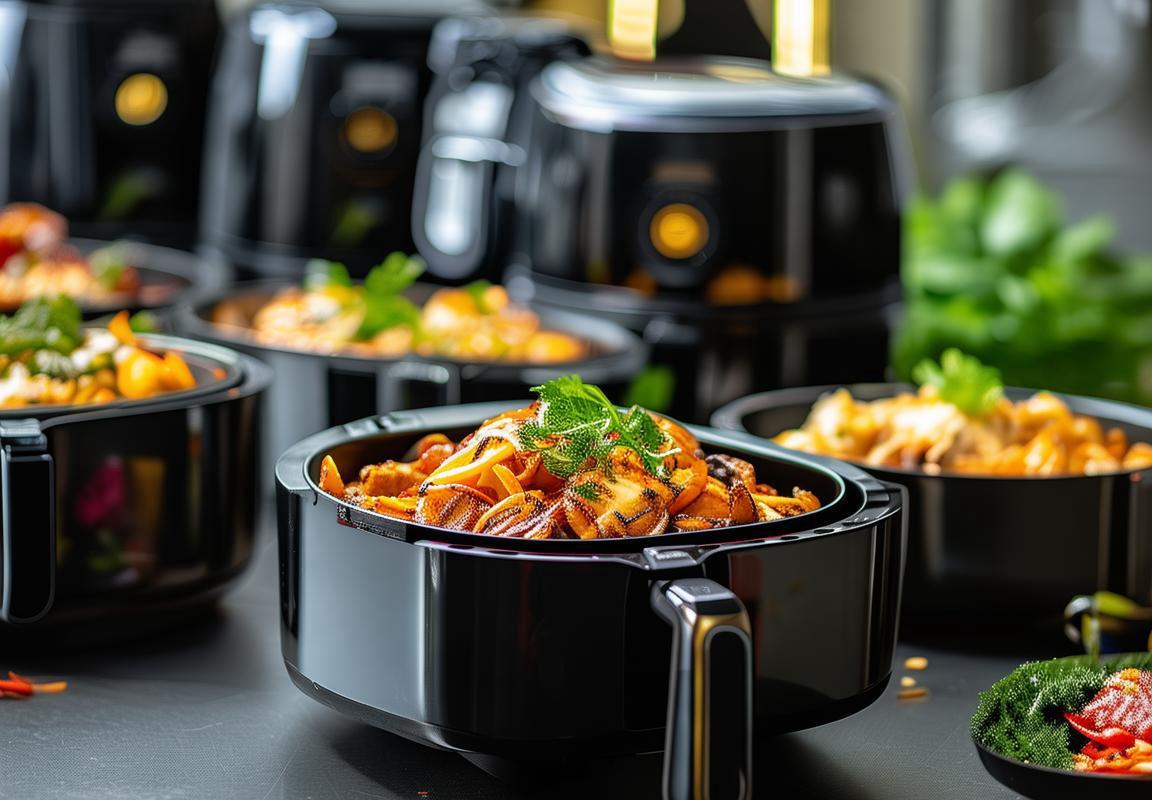
Key Trends Driving Air Fryer Demand in the Western Markets
The Western markets, particularly in Europe and the United States, have seen a surge in air fryer demand. This growth can be attributed to several key trends that have reshaped consumer preferences and the culinary landscape. Here’s a closer look at these trends:
-
Health and Wellness AwarenessConsumers in Western countries are increasingly conscious of their health and wellness. Air fryers offer a healthier alternative to traditional frying methods, allowing for the preparation of crispy, golden foods with significantly less oil. This shift towards healthier cooking options has propelled the popularity of air fryers.
-
Convenience and Time-SavingIn a fast-paced world, convenience is king. Air fryers cook food quickly and efficiently, often in less time than conventional ovens or deep fryers. This time-saving aspect appeals to busy families, professionals, and anyone looking to streamline their cooking routines.
-
Versatility and Expandable RecipesModern air fryers are not just for fried foods; they can cook a wide range of dishes, from vegetables to meats to even desserts. This versatility means that consumers can enjoy their favorite fried snacks without the guilt, while also experimenting with new recipes.
-
Technology and Smart FeaturesAs technology advances, so does the kitchenware industry. Smart air fryers with features like programmable timers, temperature controls, and even WiFi connectivity have become increasingly popular. These advancements cater to tech-savvy consumers who appreciate the convenience of remote monitoring and control.
-
Sustainability and Energy EfficiencyWith environmental concerns on the rise, consumers are more likely to invest in products that are energy-efficient and sustainable. Air fryers consume less energy than deep fryers and can often replace multiple appliances, reducing the carbon footprint and the number of items in a kitchen.
-
Influencer Marketing and Social Media BuzzInfluencers and social media platforms have played a significant role in promoting air fryers. Testimonials, recipe demonstrations, and the sheer fun of air frying have sparked conversations and trends, making air fryers a ‘must-have’ item for many.
-
Family and Social GatheringsAir fryers are great for cooking larger portions, making them ideal for family meals and social gatherings. The ability to cook a variety of dishes at once, while keeping them crispy and delicious, has made air fryers a staple in many households.
-
Cost-EffectivenessCompared to other kitchen appliances, air fryers are relatively affordable. This cost-effectiveness, coupled with their functionality, has made them accessible to a broader consumer base, contributing to their demand.
-
Globalization and Cross-Cultural CuisinesThe globalization of food has led to an interest in diverse cuisines. Air fryers allow for the preparation of dishes from various cultures, from Indian bhajis to French fries, all with a healthier twist. This cultural exploration has broadened the appeal of air fryers.
-
Health Fads and DietsThe rise of specific health fads and diets, such as the ketogenic or paleo diets, has also contributed to the demand for air fryers. These diets often restrict the use of oil and emphasize cooking methods that preserve nutrients, making air fryers a perfect match.
These trends have not only fueled the demand for air fryers in the Western markets but have also influenced the design and innovation of these appliances. As consumers continue to seek healthier, more convenient, and versatile cooking solutions, the air fryer market is expected to grow, adapting to meet these evolving needs.
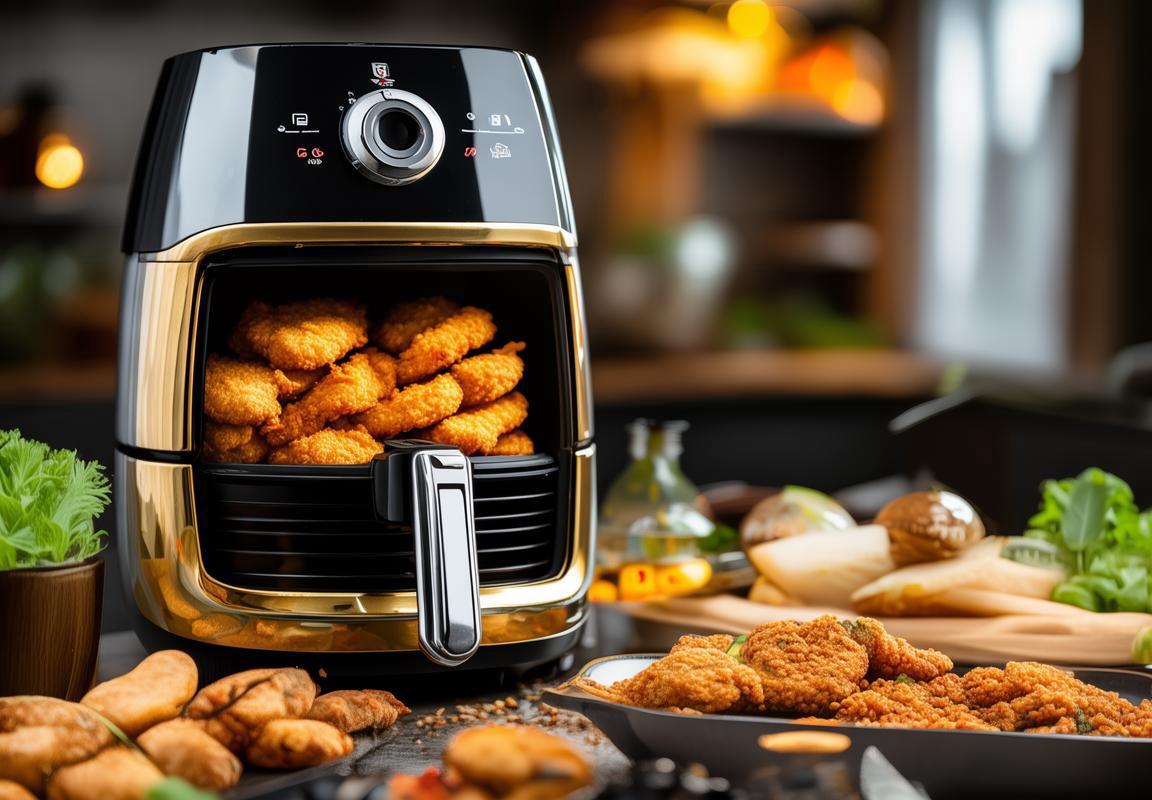
Challenges and Opportunities: A Strategic Perspective
In the competitive landscape of the kitchen appliance industry, navigating challenges and seizing opportunities is a delicate balance. For air fryer manufacturers, understanding the strategic perspective is crucial for sustained growth and innovation. Here’s an exploration of the key challenges and opportunities that shape this dynamic market:
The rapid evolution of technology has introduced new challenges in manufacturing. Ensuring that air fryers remain efficient, safe, and user-friendly requires constant innovation. Materials, design, and functionality must adapt to new standards, which can be both a challenge and an opportunity.
Consumer demand for healthier cooking options has surged, leading to a need for air fryers that offer healthier alternatives to traditional deep-frying. This shift demands not only more sustainable production methods but also the development of healthier oil options, which can be a significant opportunity for manufacturers to differentiate their products.
Regulatory compliance is another critical challenge. Different markets have varying standards and certifications that must be met. For air fryer manufacturers with a global footprint, staying abreast of these regulations is essential. Adapting to these requirements can be a challenge, but it also presents the chance to enhance brand reputation and trust.
The rise of e-commerce has transformed how consumers discover and purchase products. Air fryer manufacturers must navigate the complexities of online marketplaces, ensuring that their products are visible and appealing to a broad audience. This shift requires a strategic focus on digital marketing and product presentation, which can be a significant opportunity to engage with a wider consumer base.
The environmental impact of product lifecycle is increasingly under scrutiny. Air fryer manufacturers face the challenge of designing products that are not only recyclable but also have a lower carbon footprint. This challenge can be turned into an opportunity by investing in sustainable materials and practices, which can appeal to eco-conscious consumers.
Competitive pricing is a constant challenge in the kitchen appliance market. Air fryer manufacturers must balance cost-effective production with the need to offer competitive prices. However, this can be an opportunity to introduce value-added features or packaging that justifies a premium price point.
Global supply chain disruptions have highlighted the importance of resilience in the face of unforeseen events. Air fryer manufacturers must be prepared to manage supply chain risks, which includes diversifying suppliers and having contingency plans in place. This adaptability can be a strategic advantage in maintaining production continuity.
The rise of health and wellness trends has created a niche market for air fryers. Consumers are seeking appliances that can help them prepare meals that are both delicious and nutritious. This trend presents an opportunity for manufacturers to create specialized models that cater to these specific needs.
Consumer preferences are highly diverse, and air fryer manufacturers must cater to a wide range of cooking styles and dietary preferences. This diversity in demand requires a flexible approach to product development and marketing strategies, which can be a challenge but also an opportunity to capture a larger market share.
Lastly, the integration of smart technology into air fryers has opened up new opportunities. Manufacturers that can offer connected appliances with customizable cooking programs and remote monitoring capabilities can tap into a market segment that values convenience and technology integration. This integration, while challenging to develop, can be a significant competitive edge in the marketplace.

Data-Driven Insights: Market Growth and Consumer Trends
In the ever-evolving landscape of kitchen appliances, air fryers have surged in popularity, not just as a cooking gadget but as a symbol of health-conscious living. To delve into the dynamics of market growth and consumer trends, one must look at the data that paints a clear picture of this upward trajectory.
Consumer Shifts Towards Healthier Cooking MethodsThe shift towards healthier lifestyles has been a significant driver in the air fryer market. With the rise of awareness about the health risks associated with deep-frying, consumers are seeking alternatives that allow them to enjoy their favorite fried foods with fewer calories and less oil. This trend has been particularly strong in the Western markets, where health and wellness are at the forefront of consumer choices.
Technological Advancements and FeaturesTechnological advancements have played a crucial role in the growth of the air fryer market. Modern air fryers come with features like programmable settings, adjustable temperature controls, and even smart technology that allows for remote monitoring. These innovations not only enhance the cooking experience but also cater to the demands of tech-savvy consumers who appreciate the convenience and precision of these features.
Demographic Changes and Lifestyle FactorsDemographic changes, such as an aging population and increased single-person households, have also influenced the air fryer market. Older consumers may appreciate the ease of use and health benefits, while singletons often prefer compact, space-saving appliances. Additionally, the busy lifestyles of many Westerners have led to a preference for quick and efficient cooking methods, which air fryers offer in abundance.
Seasonal Fluctuations and PromotionsSeasonal trends and promotional activities have a notable impact on air fryer sales. For instance, during holiday seasons, when people are more likely to indulge in festive foods, air fryers can be a popular gift item. Similarly, sales promotions, discounts, and bundle deals can significantly boost sales, as consumers are more inclined to purchase during these periods.
Market Penetration and Brand LoyaltyMarket penetration rates vary significantly across different regions within the Western markets. In some areas, air fryers have become a staple in many households, while in others, they are still a niche product. Brand loyalty also plays a part, with certain brands gaining a reputation for quality and innovation. Consumers often seek out these trusted brands, which can lead to higher sales and market share.
Price Sensitivity and Budget ConstraintsPrice sensitivity is a key factor in the air fryer market. While premium models with advanced features may command a higher price, there is also a growing demand for more affordable options. Budget constraints, especially in the wake of economic downturns, can influence consumer purchasing decisions, leading to a preference for more cost-effective air fryers.
E-commerce and Online Sales ChannelsThe rise of e-commerce has revolutionized the way air fryers are sold. Online platforms provide consumers with a vast array of options, easy price comparisons, and the convenience of home delivery. This shift has opened up new markets and has allowed manufacturers to reach a broader audience. Moreover, online reviews and social media marketing have become crucial in shaping consumer perceptions and purchase decisions.
Sustainability and Eco-Friendly PracticesIn recent years, sustainability has become a major concern for consumers. Eco-friendly practices, such as using recyclable materials and energy-efficient designs, are increasingly influencing purchasing decisions. Air fryer manufacturers that prioritize sustainability may find a competitive edge in the market, as environmentally conscious consumers are more likely to support their products.
In conclusion, the market growth and consumer trends in the air fryer industry are multifaceted, driven by a combination of health-conscious living, technological innovation, demographic shifts, and changing consumer preferences. By understanding these trends, manufacturers can better position their products and capitalize on the opportunities presented by the Western markets.

The Impact of Technology on Air Fryer Design and Functionality
The evolution of air fryers has been nothing short of remarkable, transforming from a niche kitchen gadget to a staple in many homes. Technology has been the driving force behind this transformation, with innovations that have not only improved the cooking experience but also expanded the appeal of air fryers to a broader consumer base. From the early days of simple, single-function devices to the sophisticated, multi-functional appliances available today, the impact of technology on air fryer design and functionality is undeniable.
One of the most significant technological advancements in air fryer design has been the development of more efficient heating elements. Early models often suffered from uneven cooking and a lack of temperature control, leading to overcooked or undercooked food. Modern air fryers, however, come equipped with precision heat sensors and programmable settings that ensure consistent cooking temperatures, resulting in perfectly crispy and golden-brown results every time.
The introduction of digital displays and touch controls has also revolutionized the user experience. These features make it easier for consumers to select their desired cooking settings and monitor the progress of their meals. The ability to adjust cooking times and temperatures at the touch of a button has made air fryers more accessible to both novices and seasoned chefs.
Another technological breakthrough has been the integration of smart technology. Many modern air fryers are now compatible with smartphones and tablets, allowing users to control their appliances remotely. This feature is particularly appealing to busy individuals who want to prepare meals in advance or monitor their cooking process while multitasking. Smart air fryers can also offer a range of additional benefits, such as automatic shut-off and alerts for when the cooking cycle is complete.
The design of air fryers has also seen substantial improvements. Early models were often bulky and took up a lot of space. Today, air fryers come in various sizes and shapes, from compact countertop units to larger, family-sized models. This variety allows consumers to choose an appliance that fits their specific needs and kitchen layout.
One of the most notable design changes has been the inclusion of non-stick coatings. This not only makes cleaning easier but also prevents food from sticking to the basket, ensuring that every morsel is crispy and delicious. Some advanced models even feature removable baskets for easier handling and cleaning.
The functionality of air fryers has expanded beyond the traditional concept of frying with hot air. Many modern units now offer a range of cooking modes, including roasting, baking, and even dehydrating. This versatility has opened up a world of culinary possibilities, allowing users to prepare a wide array of dishes, from crispy fried chicken to health-conscious roasted vegetables.
In addition to these technological and design advancements, the focus on sustainability has also influenced air fryer development. Manufacturers are increasingly using eco-friendly materials and energy-efficient technologies to reduce the environmental impact of their products. This shift towards sustainability is not only beneficial for the planet but also resonates with consumers who are increasingly conscious of their ecological footprint.
The impact of technology on air fryer design and functionality is also evident in the rise of healthier cooking options. Air fryers use significantly less oil than traditional frying methods, which has made them a popular choice for health-conscious consumers. The ability to cook a variety of foods with minimal oil has helped to redefine the way people think about frying, making it a healthier option without sacrificing taste.
As technology continues to advance, we can expect even more innovative features to be integrated into air fryers. From the development of air fryer ovens that can cook multiple dishes simultaneously to the integration of AI for personalized cooking recommendations, the future of air fryer technology looks promising.
In conclusion, the impact of technology on air fryer design and functionality has been transformative. From improved cooking performance to enhanced user experience and a broader range of cooking capabilities, the evolution of air fryers is a testament to the power of innovation in the kitchen. As technology continues to evolve, air fryers are poised to become an even more integral part of modern cooking, offering convenience, health benefits, and culinary versatility.
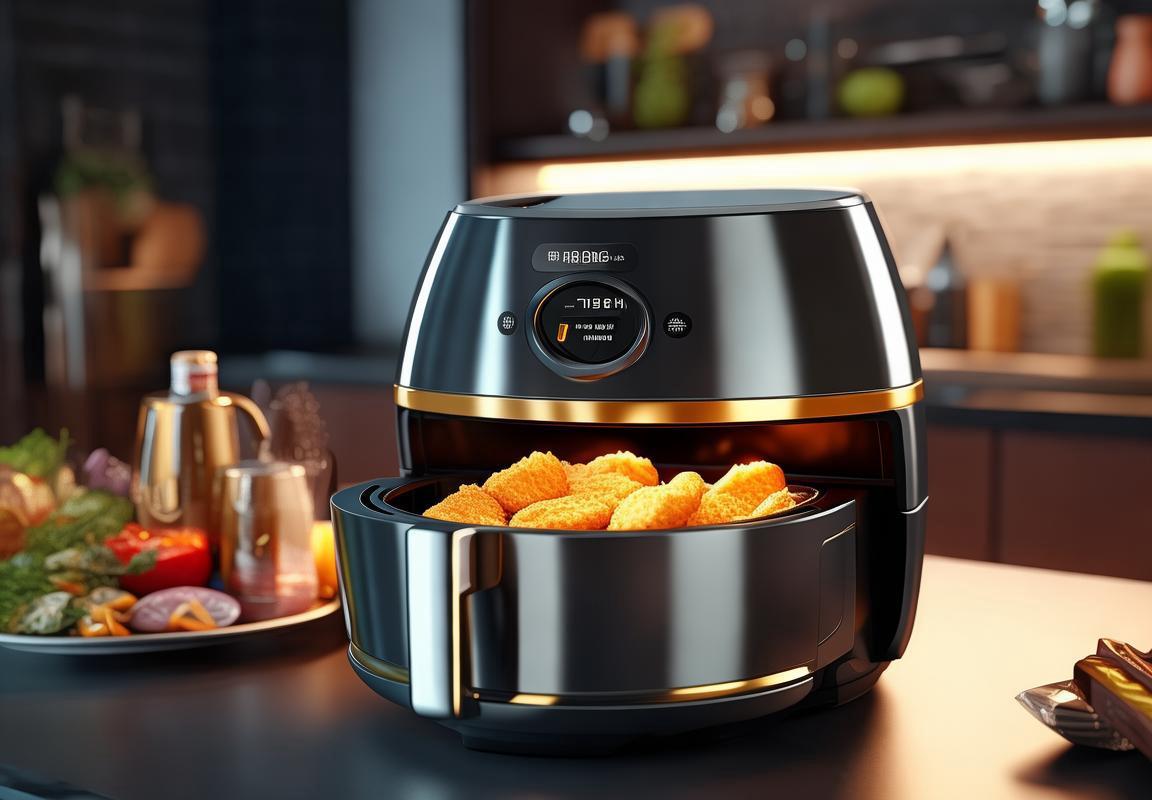
Future Projections: What the Next Decade Holds for Air Fryers in the West
In recent years, the air fryer has emerged as a staple in kitchen appliances, particularly in the Western markets. As we look ahead, several factors are shaping the future of this innovative cooking technology. From advancements in design to evolving consumer preferences, the next decade promises to be transformative for air fryers in the West. Here’s a glimpse into what lies ahead:
The integration of smart technology is set to revolutionize the air fryer market. With the rise of the Internet of Things (IoT), we can expect air fryers to become more connected and interactive. Imagine a scenario where your air fryer can sync with your smartphone, allowing you to monitor cooking times and temperatures remotely. This level of connectivity could enhance convenience and safety, as users can receive alerts if something goes wrong while they’re away from home.
Energy efficiency remains a critical concern for consumers, and the next decade is likely to see significant improvements in this area. As environmental consciousness grows, manufacturers will focus on developing air fryers that consume less energy without compromising performance. This could involve the use of advanced insulation materials or more efficient heating elements, ultimately leading to cost savings for consumers and a smaller carbon footprint.
The health and wellness trend continues to influence kitchen appliance purchases. Air fryers, by their very nature, offer a healthier alternative to traditional frying methods, which often involve high levels of oil and fat. As more consumers become health-conscious, the demand for air fryers that use minimal oil or oil-free cooking methods is expected to rise. This could drive the development of new technologies, such as non-stick coatings that last longer and require less oil for cooking.
Customization is becoming a key factor in product design. Air fryers are no longer just about cooking fried foods; they are becoming multi-functional appliances that can bake, roast, and even grill. The next decade could see a surge in models with adjustable settings and programmable menus, catering to a wide range of dietary preferences and cooking styles. Users might be able to choose from pre-set programs for chicken, fish, vegetables, or even desserts, making the air fryer a versatile tool for the entire family.
The rise of social media and online reviews has had a profound impact on consumer purchasing decisions. As such, brands will need to focus on creating air fryers that not only perform well but also look great and inspire envy. The aesthetic appeal of an air fryer can play a significant role in its popularity, especially among younger consumers who are influenced by trends and aesthetics. Expect to see sleeker designs, vibrant colors, and innovative features that make air fryers not just practical but also a statement piece in the kitchen.
As the world becomes more environmentally conscious, sustainability will become a key consideration in air fryer manufacturing. This means using eco-friendly materials, reducing packaging waste, and ensuring that appliances are recyclable or have a long lifespan. Brands that prioritize sustainability may gain a competitive edge, as consumers increasingly seek out products that align with their values.
The next decade will also see the emergence of new market segments, such as professional-grade air fryers. Chefs and foodservice operators are increasingly looking for commercial appliances that can replicate the benefits of air frying in a commercial setting. This could lead to the development of more robust and durable air fryers, capable of handling high volumes of food and with features like faster heating times and larger capacities.
Lastly, the global supply chain will play a crucial role in the future of air fryers in the West. As manufacturers seek to reduce costs and improve efficiency, they may look to new sourcing locations, which could impact the quality and cost of air fryers available in Western markets. The ability to adapt to supply chain changes and maintain high-quality standards will be essential for brands looking to stay competitive.
In conclusion, the next decade is poised to bring significant changes to the air fryer market in the West. From technological advancements to evolving consumer needs, the air fryer is set to become an even more integral part of modern kitchens, offering healthier, more convenient, and sustainable cooking options.